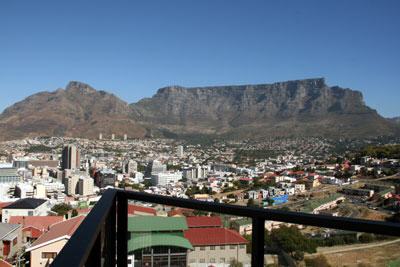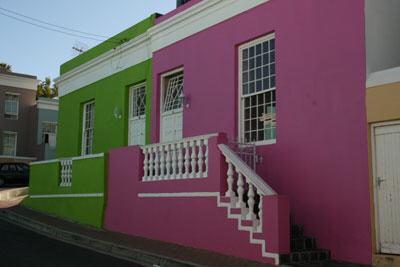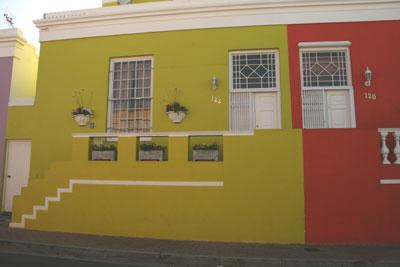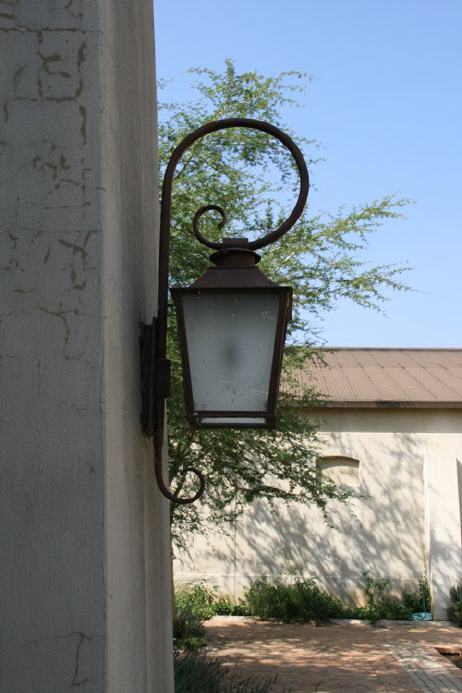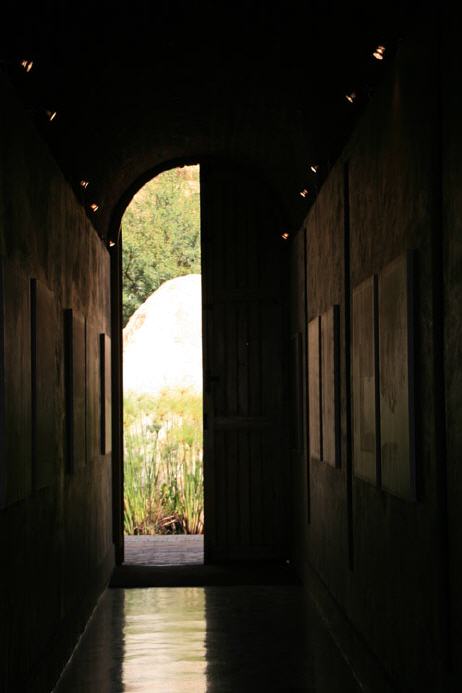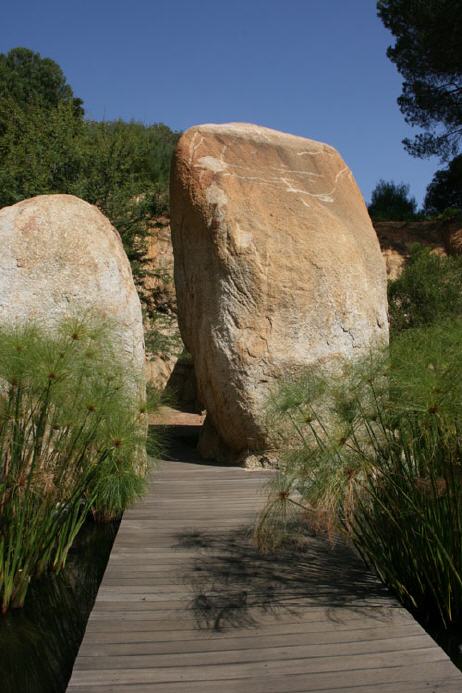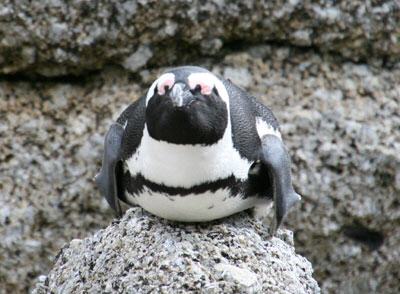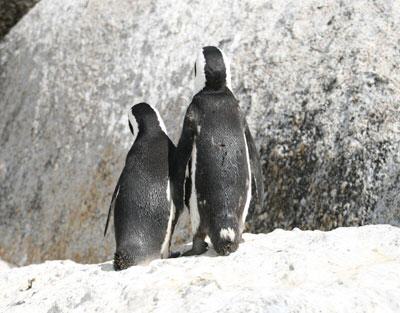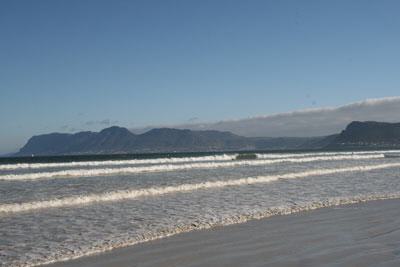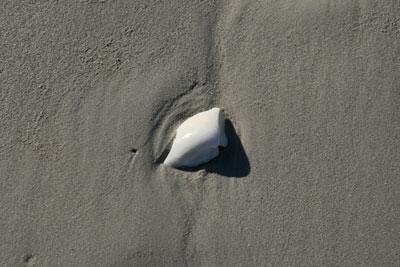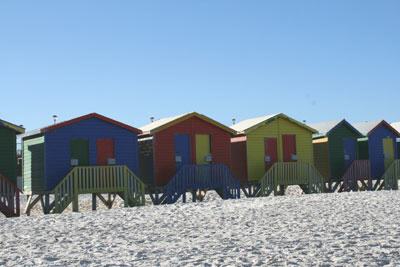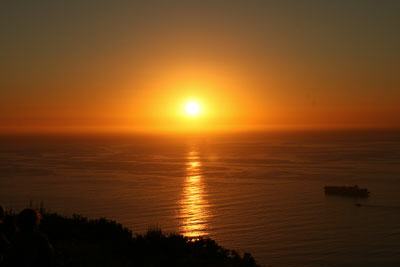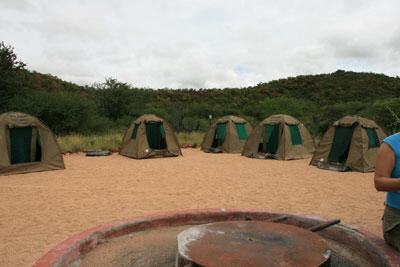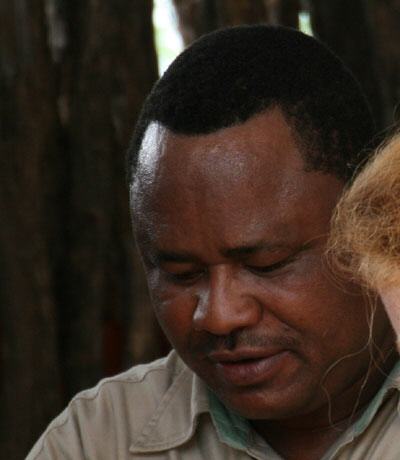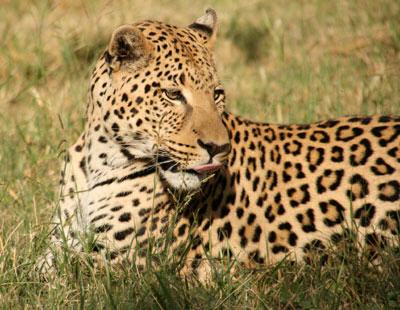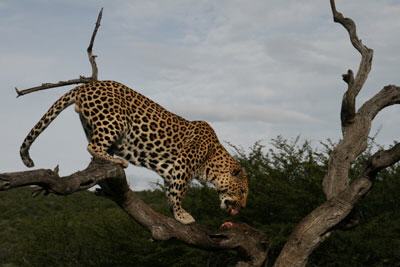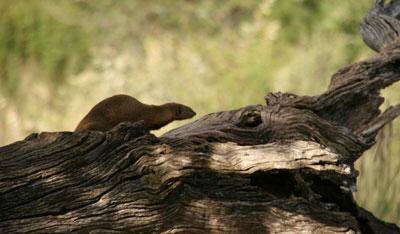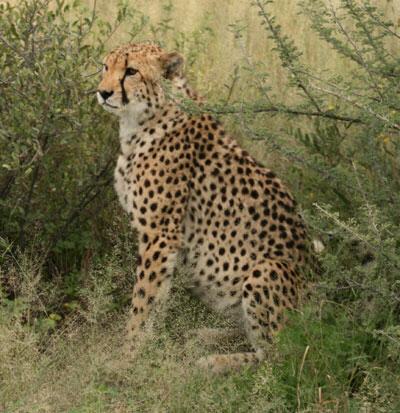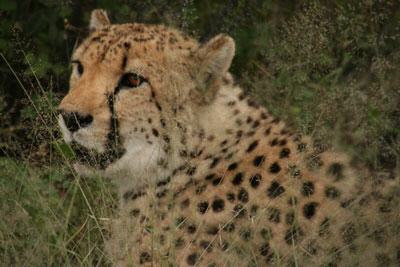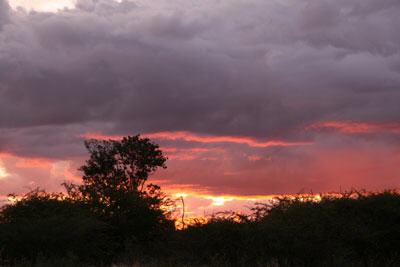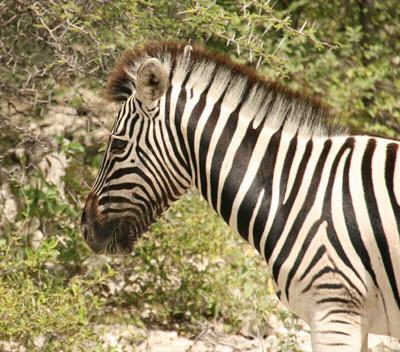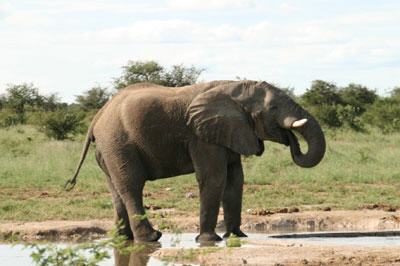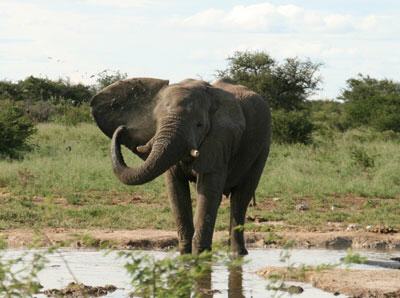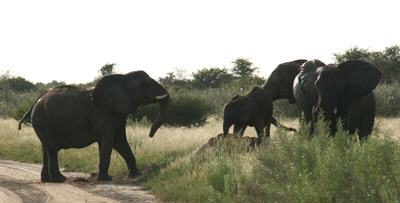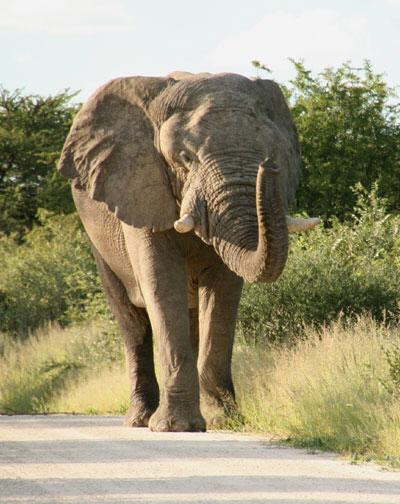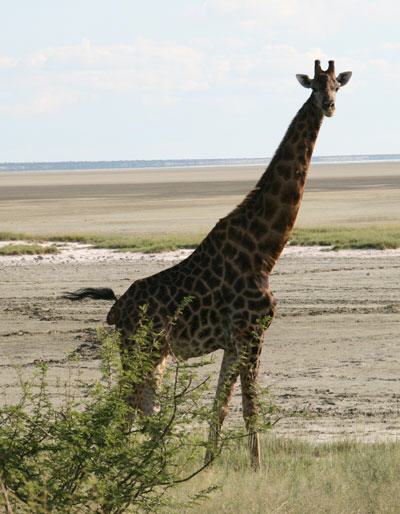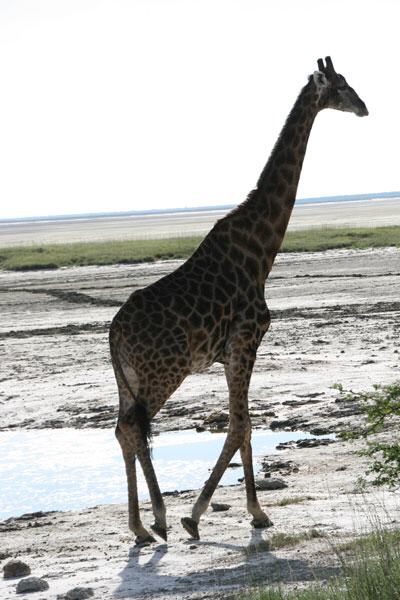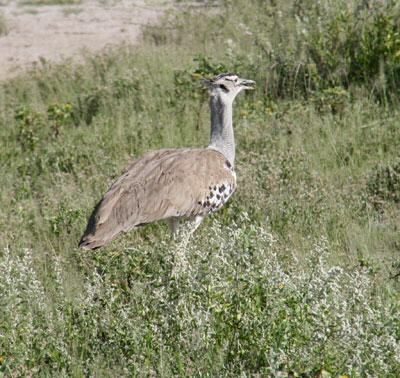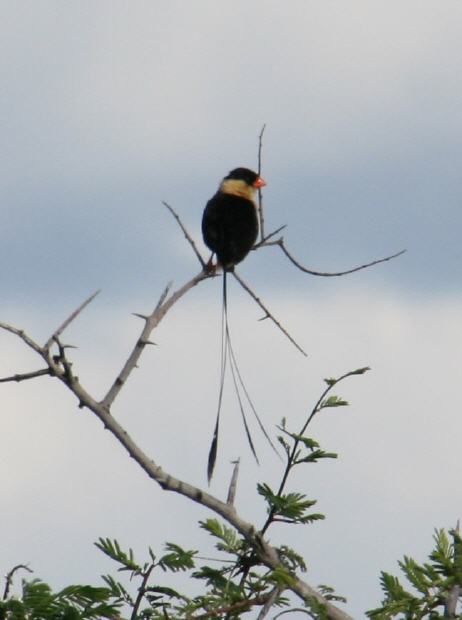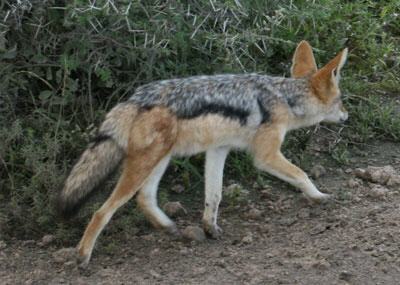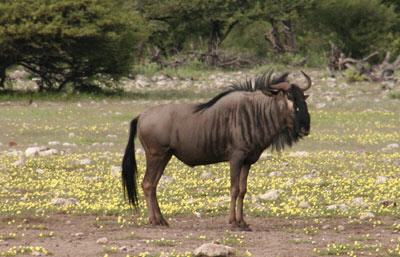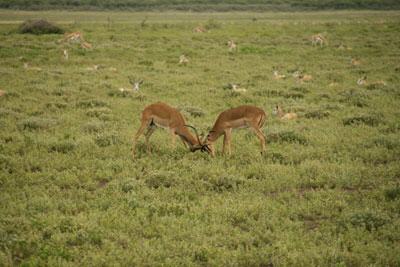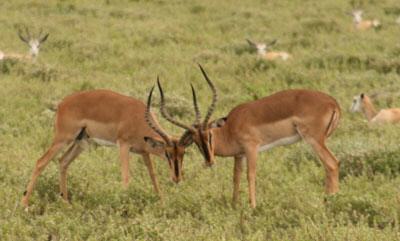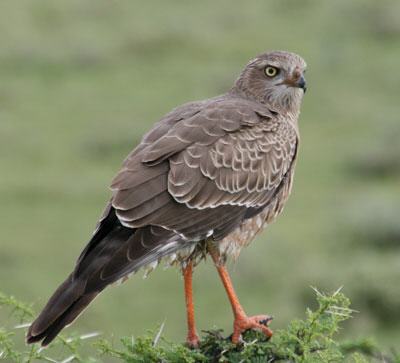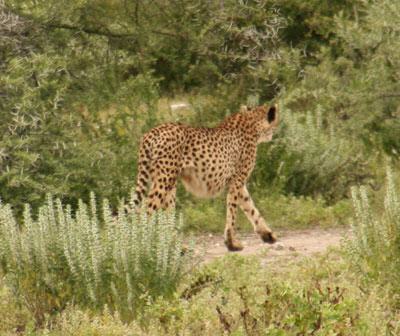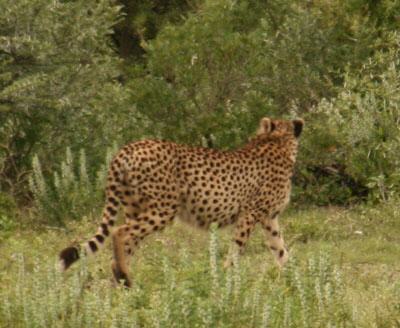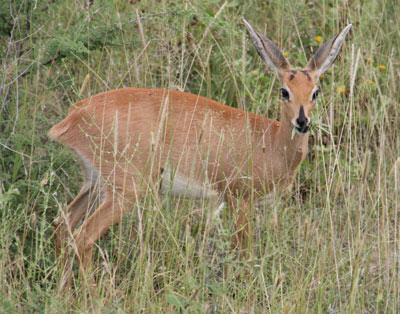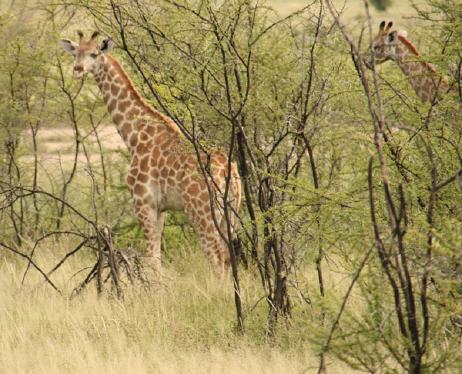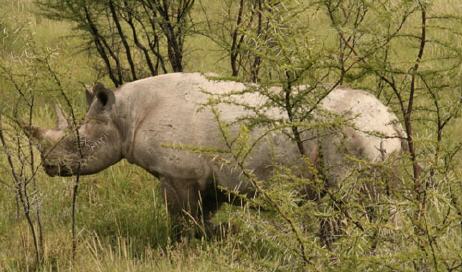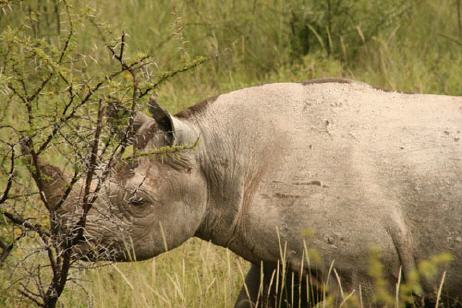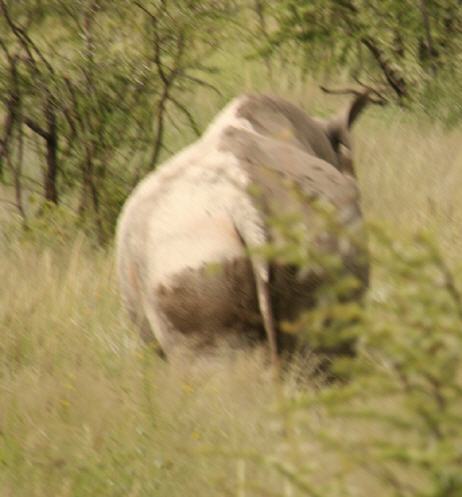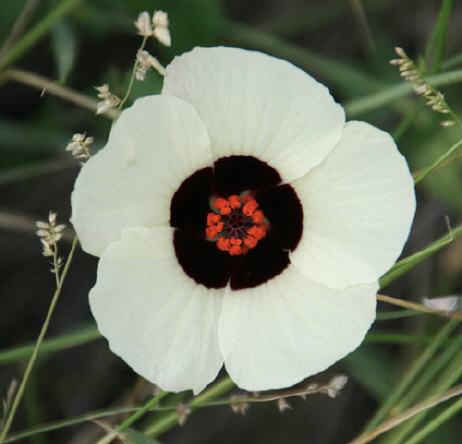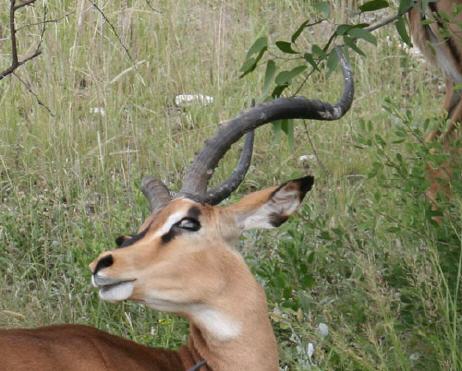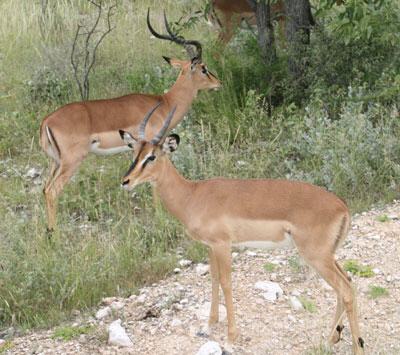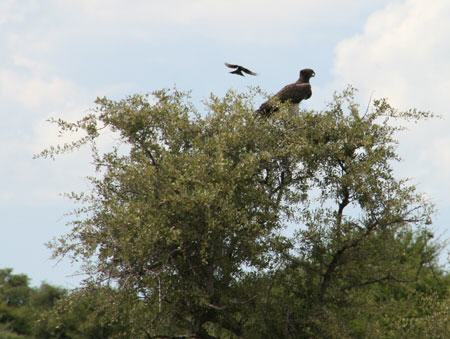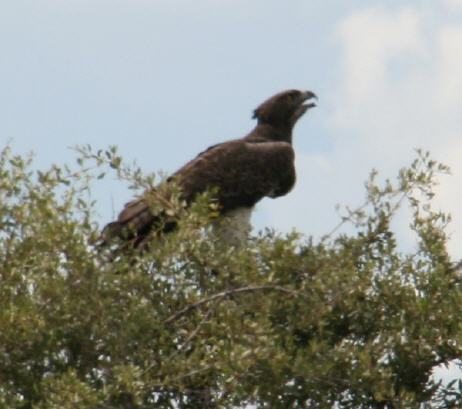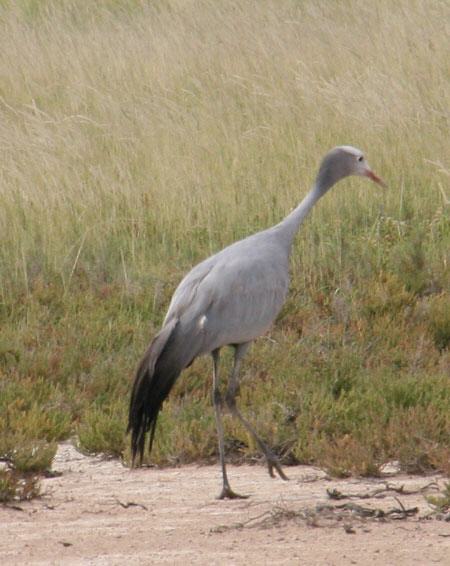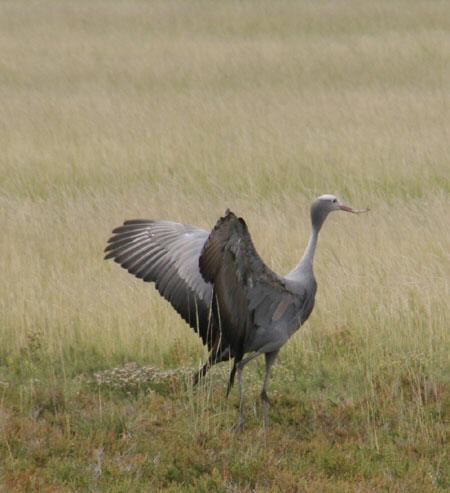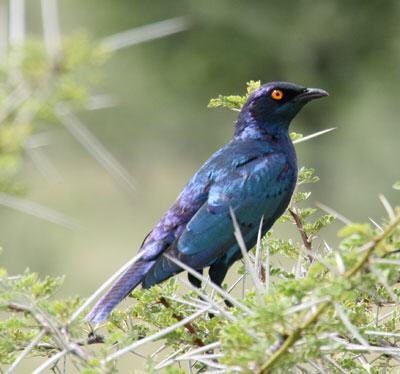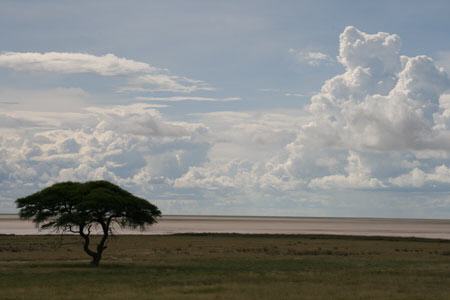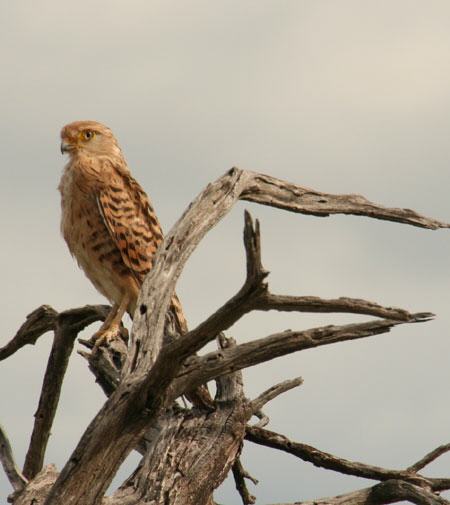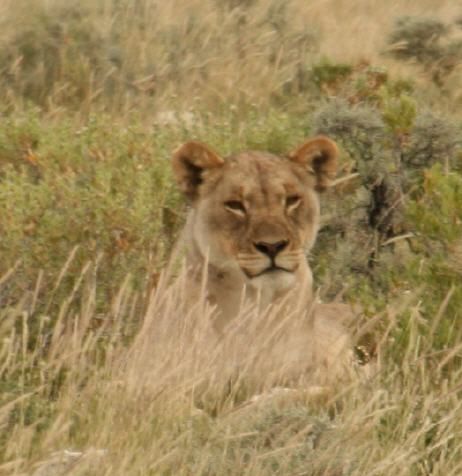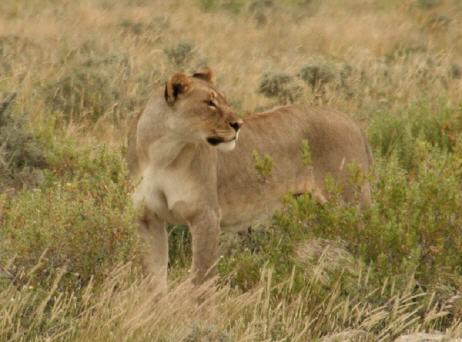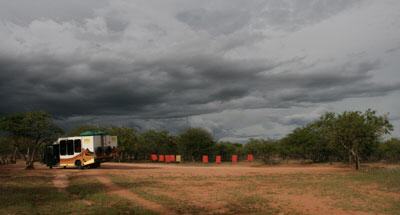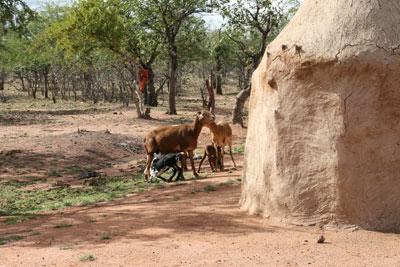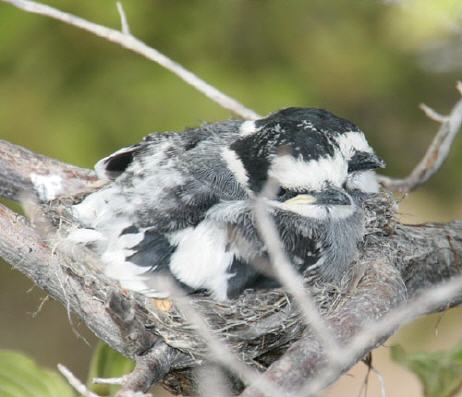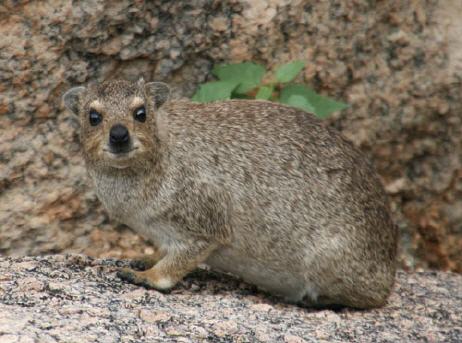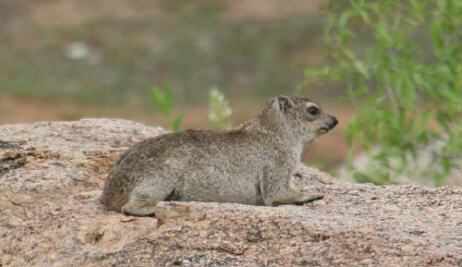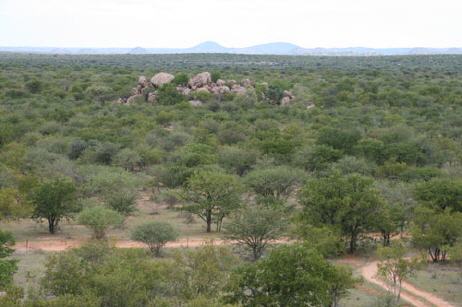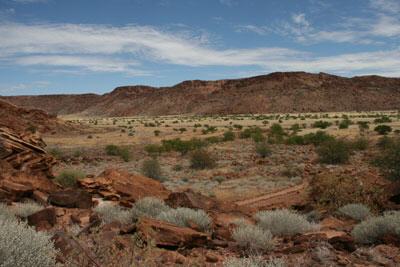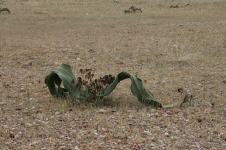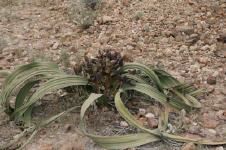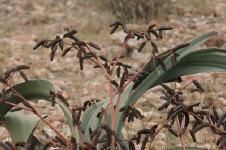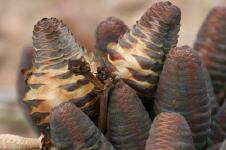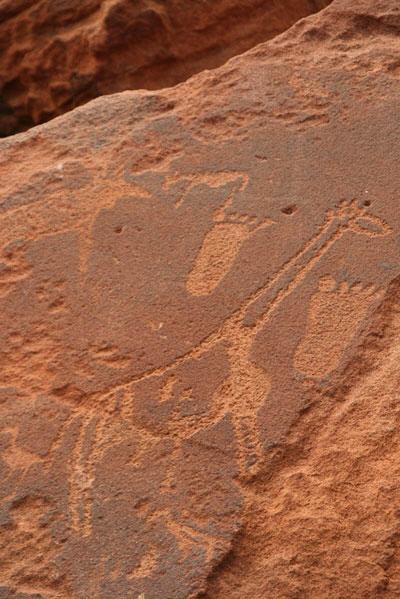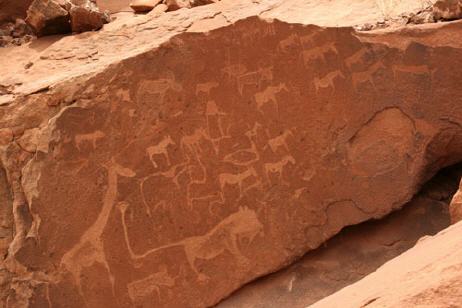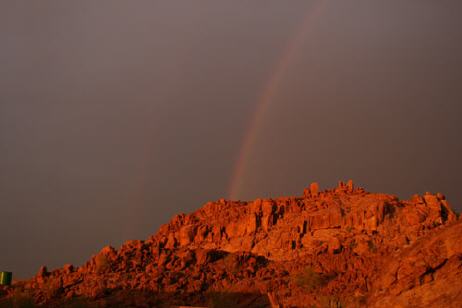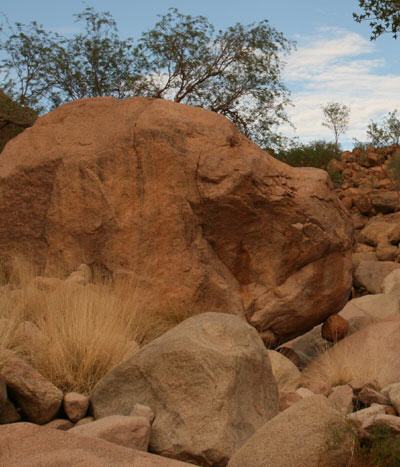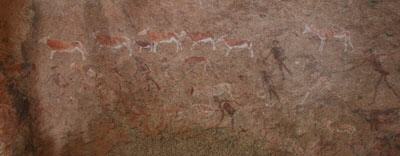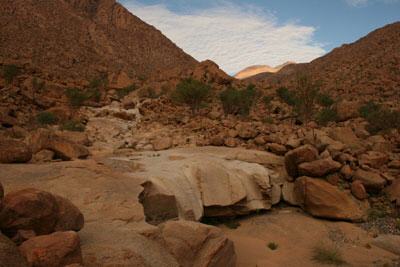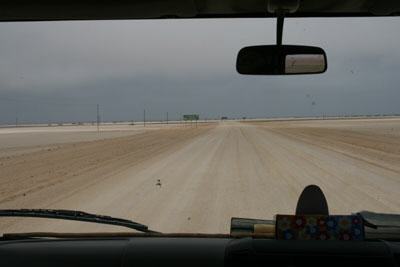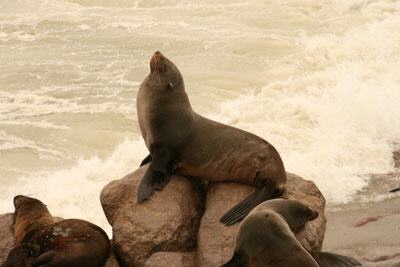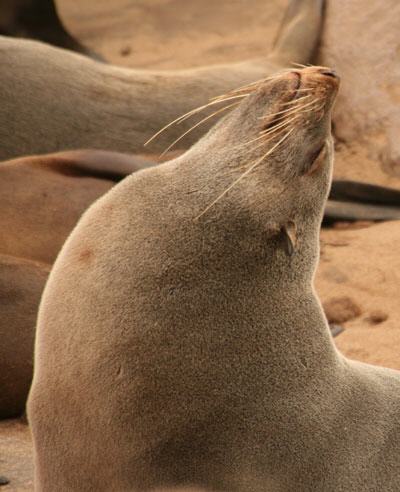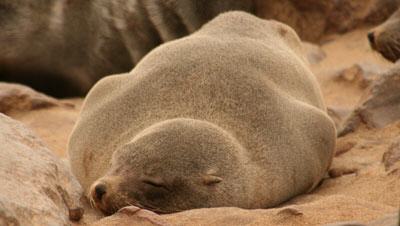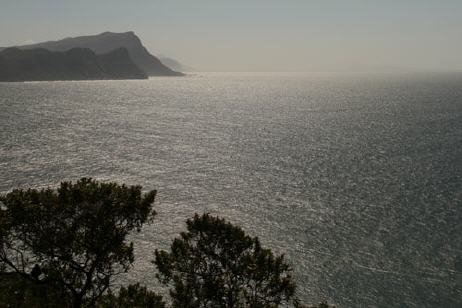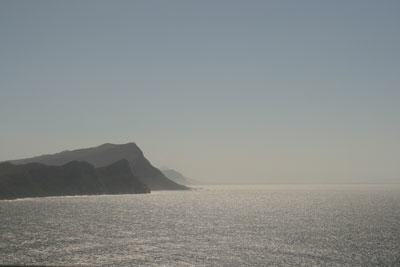 |
 |
 |
AFRICA 2010 |
 |
|
|
Homepageleser und Freunde wissen, dass ich seit unser Sohn Johannes in Südafrika lebt, meine Liebe zu diesem Land entdeckt habe. Und nie vergessen habe ich die Bilder und Berichte über afikanisches "wildlife", die ich als Kind aufgesaugt habe. Was habe ich viele Haferflocken gegessen, um die entsprechenden Bücher von Bernhard Grizmeks mit Bildern ausstatten zu können! (Ich weiß, das versteht nur meine Generation!).
Fangen wir diesmal hier an: Johannes arbeitet noch in der beschaulichen Stadt Stellenbosch, lebt aber inzwischen im sprudelnden, lebendigen Kapstadt. Dies ist ein Teil des Blick von seinem Balkon, auf
|
Tafelberg (ohne Tafeltuch!)
|
|
|
|
Fast hätte ich es vergessen: natürlich sieht man auch dieses wichtige Bauwerk vom Balkon aus:
|
World Championship Arena Cape Town
|
|
|
|
Diesmal wollte ich Bo-Kaap kennenlernen, den bunten, fröhlichen Stadteil der Kap-Malayen. So sieht es dort aus:
|
Bo Kaap
|
|
|
|
|
Stellenbosch
|
Natürlich gehört zu einem Kapstadt-Besuch auch ein Ausflug in die Region Stellenbosch verbunden mit dem Genuss der wunderbaren Kap-Weine. Nicht nur die Weine kitzeln den Gaumen, auch die Weingüter schmeicheln den Augen. Vom gepflgetenalten kapp-holländischen Stil bis zu der modernster Architektur gibt es alles zu sehen. Dies ist die Anlage eines bekannten Golfspielers, der nebenbei noch guten Wein anbaut.
|
|
|
|
|
|
|
|
|
|
|
|
|
|
|
|
|
|
Das Auge des Botanikers und des Hobbygärtners lacht!
Wer hier seinen Agapanthus im Winter liebevoll verstaut, wird am Kap über die unglaubliche Fülle dieser schönen Pflanzen staunen. Leider sind sie im März fast überall verblüht, aber hier kann man sich noch vorstellen, wie es im Sommer aussah.
|
Boulders Beach
|
Da Roland bei unserem ersten Kapstadt Besuch nicht dabei war, mussten wir ihm unbedingt die Kapumgebung zeigen. Als erstes unsere bekifften Freunde von Boulders Beach:
|
|
|
|
|
|
|
Dann Muizenberg Beach
|
|
|
|
|
|
|
|
Paternoster
|
Johannes, unser Reiseberater, hatte uns hierher geschickt. Für ihn ist es der schönste Ort der Welt.
Verstehen können wir diese Wahl, aber wir Europäer suchten natürlich in diesem Küstenort nördlich von Kapstadt nach typisch afrikanischem. Das war nur der schwarze Crayfisch-Verkäufer, der versuchte, uns seine frisch gefangenen Hummer zu verkaufen. Ansonsten: einer der schönsten Küstenorte der Welt (Cornwall, Bretagne, nicht ganz Griechenland, ???).
|
|
|
|
Von der Küste in die Berge
|
Von Paternoster nach Clanwilliam, der Heimat des Rotbuschtees. Nur hier wächst er. Sehr viel beeindruckender als die Grasbüscheln ähnelnden Roybushes warenallerdings die sattgrünen Zitrusbäume der Region.
Und unser nächstes Ziel waren die prähistorischen Felszeichnungen der San-Buschmänner in den Cederbergen. Zunächst aber erst einmal unsere Bleibe dort: (Bevor wir die Pferde-Herde entdeckten, wurden wir durch duftende Pferdeäpfel direkt vor unserer Haustür auf ihre Gegenwart aufmerksam gemacht). Nachdem wir erst einmal ein wenig geschockt waren, genoßen wir unser ruhiges Quartier zwischen nichts und nirgendwo. Für den wunderbaren südlichen Sternenhimmel fehlte mir leider ein Stativ.
Am nächsten Morgen begaben wir uns auf Hiking-Tour und entdeckten nicht nur die Felszeichnungen, sondern auch die ersten großen Tiere. Die Eland-Antilopen verfolgten uns lange mit ihren Blicken, während die Dazzies (Klippschliefer?) meist schnell das Weite suchten.
|
|
|
|
Southafrican sundown
|
|
|
|
Wieder zurück in Kapstadt begleiteten wir Johannes bei seinem abendlichen Sportprogramm - Laufen am Tafelberg. Nee, nee, wer mich kennt, weiß das Laufen nicht so mein Ding ist. Wir wurden soweit oben, wie Autos fahren können, abgesetzt , Johannes ist dann an uns vorbei gelaufen und hat uns auf dem Rückweg begleitet.
Der Sonnenuntergang ist typisch für Kapstadt.
Am nächsten Tag ging es los nach Namibia. Für Menschen, deren finanzielle Resourcen begrenzt sind, bieten die Coastliner/Sleepliner Busse im südlichen Afrika eine günstige, komfortable Alternative zum Flugzeug.
Inzwischen ungewohnt war der nächtliche Grenzübergang von Südafika nach Namibia. Wer einmal zu DDR-Zeiten von Westdeutschland nach bBrlin gefahren ist, wird an diese Fahrt erinnert. Wir wurden genau kontrolliert, unsere Pässe bekamen beindruckende Stempel und erst nachdem der Drogenhund im Bus nichts gefunden hatte, dürften wir weiterfahren.
Am frühen Morgen kamen wir in Winhoek an und jetzt wuchs bei mir die Spannung: würden wir wirklich von unsren Safari-Leuten an der richtigen Stelle abgeholt?
Und dann noch mehr Spannung: wie würden wohl die anderen Safari-Teilnehmer so sein? Ich kaufe gern auf dem Flughafen Bücher. Diesmal lockte mich das Erdmännchen auf dem Titelbild:
|
|
|
|
|
|
und es erwies sich als absoluter Volltreffer! Meine Schwester und ich hatten das zum Schreien komische Buchvon Tommy Jaud über eine Namibia-Safrai bereits im Flugzeug durchgelesen und waren nun gespannt, welches Mitglied unserer Truppe welche Rolle übernehmen würde!
Und von nun an wechsele ich zu Englisch, damit unsere HAPPY-FAMILY folgen kann.
|
HAPPY FAMILY
|
Shortly after we'd arrived at Wild Dog's headquarters a safari bus full of people who seemd to be well aquainted with each other arrived. Would they be our crew?
Well, it turned out most of them were. Willem, our guide, introduced himself and his nice young assitant Ruben, and we had this first shy look: Would we like the others? It turned out that some of them had spent a few days together on Wild Dog's southern tour. It didn't take long before Willem told us that we were his happy family now and it took only a short time longer until we believed him.
Let's have a look at out tents before I tell you about the family:
|
|
|
|
|
|
Now that I'm thinking about our trip, I realize that there aren't enough photos. Sure, you get an idea what the tents look like, but you should see the fancy open-air shower and toilet of our first campsite!
Ah, ja, happy family: We three Germans, two real Brits (I'll tell you more later!), two American ladies on holiday from their Peace Corps-work in Lesotho, a German-Turkish supergirl from New York, a German teacher living in Cape Town, a nice Estonian couple, a Dutch guy speaking the best English ever, and Julia, sunshine from Munich. And Ruben and
|
Willem
|
|
|
|
I would love to give Willem a job at our school. With all his knowledge and his sensitive way of dealing with his "happy family" he'd make a great teacher!
On our firtst day they took us to "Africat":
|
|
|
|
Wahoo
|
|
|
|
When Wahoo was a youngster, starting to feel all his power, he attacked his human master, and now he doesn't live in his master's house any more but on this beautilful and large part of Namibian soil - but fenced in.
|
|
|
|
|
|
Wahoo ist the star of Arikat. Well, he's a hand-raised leopard. This picture and lots of other beautiful pictures were taken while he was fed. But even though he's not a really wild one, he was a great start!
|
|
|
|
|
|
It seems nowadays this little fellow is Wahoo's only real friend - the only one who dares to have direct contact.
It was funny to watch the little mongoose popping up here and there while the big cat was enjoying his dinner.
|
A cheetah
|
|
|
|
"Afrikat" is a big cat conservancy, trying to teach farmers to live with the big cats and to relocate some others (cats - not farmers!)
After meeting Wahoo the Africat people went cheetah hunting with us. This beautiful boy is one of three cheetahs which will stay at the conservancy because they've already had too much contact with humans. But other than Wahoo they have to fend for themselves.
|
|
|
|
|
|
When we finally found them, they were in this special lazy, tranquile mood that goes together with a warm late afternoon. We saw all three of them together and when they were slowly, contentedly rolling on their backs it really took self-control not to leave the vehicle for closer contact.
|
|
|
|
|
|
Leaving the cats we experienced yet another one of those most beautiful African sundowns.
I know, you see our quite simple green tents. But when we returned, Willem and Ruben had prepared a delicious dinner and before going to bed we had a nice swim in the pool.
Yes, it was a bit of a sportive safari: Willem and Ruben did the cooking and they packed and unpacked the bus. I'm sure you haven't got an idea how many kilos they had to handle wih all our gear. Nevertheless it was our task to put up the tents in the evening and take them down every morning. But if you think that's a bit low-budget - you should have seen the nice swimming pools that went with all the camp sites!
OK - time to go to bed befote I take you to Etosha. I'll dream of all the big animals!
|
Etosha - one of my dreams
|
|
|
|
Usually the first animal to appear is a warthog. And that's about the only time the driver has to stop for them. Even if they belong to the very funny ones, they usually don't get the full attention. As you can see, the zebras made me more happy, too. Zebras turned out to be very pretty, but reluctant to be banned on photos. I'm quite happy to have some fairly good pictures this time.
|
|
|
|
|
|
Anyway, Willem wasn't hunting the small ones: it was a hunt for the big four for us this time (no buffalos in Etosha!). Well, first we saw the dung, then we could smell them and finally - here they were:
|
|
|
|
|
|
|
|
|
As it was a ice and warm day it was a good idea to have a cooling body spray.
|
|
|
|
|
|
In the middle of the picture you can see the baby. We spent quite some time watching him enjoying a nice roll-around on the termite hill. It was as difficult to get a close picture of him as of any other baby elefant. Mum and the aunts are always protecting them carefully
|
|
|
|
|
|
Here an impressive lone male is approaching us.
By the way, do you know how you can tell that he is an African elefant?
Oh, come on, you can see it on the first glimpse: He's moving on the left side of the road!
On the first elefant picture you can see a nice muddy puddle, a remnant from this year's abundant rainy season. That may be the reason that we didn't see as many elefants as I'd hoped for: no need to come to the big waterholes yet.
But if there really weren't enough elefants for my taste the number of giraffes made up for this:
|
|
|
|
|
|
|
|
|
I think I'll bore you with some more pictures of giraffes eating, giraffes hiding behind bushes in the course of this diary.
It's such a difference if you see those elegant animls in a zoo or in the wild!
|
|
|
|
|
|
Bustards (Trappen) are the largest birds still able to fly. Even though Willem told us that they ALWAYS appear as a couple, this one must have scared his mate away.
I was surprised to see so many of them in Namibia, in and out of Etosha: I thought bustards (I was not the only one to wonder in the beginning why Willem spoke of these birds in such an unfriendly way. I knew the German name, but had never heard the English one, so I was surprised that Willem called them bastards!
If anybody had asked me before the trip, I'd told him about my interest in impressive wild mammals, but birds? No, not so interesting. But during the safari I saw quite a number of beautiful and interesting species, like this pretty one:
|
|
|
|
|
|
The safari-day ended with Willem speeding back to the camp. The camps in Etosha close at sundown and if you'are late there will be a fine! It was hard to pass the big herd of impala without stopping, but just as nice to see yet another fantastic sunset from the camp.
While we relived the day again from the displays of our cameras Willem and Ruben prepared a great supper and we enjoyed the company of the others at the camp-fire.
We always went "to bed" (mattress and sleeping bag!) happily - recollecting the day and looking forward to the next one!
|
|
|
|
|
|
This black-backed jackal believes in the proverb "the early bird catches the worm" and is looking for something nice to discover.
We learned to believe in what our guide says: "Don't leave your shoes outside the tent! The jackals are patrolling the grounds at night and they love leather." In the morning not-so-happy family member Kay hadn't believed that the animals would find even the small peces of leather on her otherwise leatherless outdoor sandals. Well, the day started with one sandal less.
|
|
|
|
|
|
The wildebeest or Streifengnu (you should have heard Willem say the word!) was posing today. Yesterdays wildebeest pictures were not half as good!
Etosha is famous for it's large herds of antilopes and gazellas. Here you see numerous springbock watching two male impala fight.
|
|
|
|
|
|
They remined me so much of the little boys in school. When you ask them to stop fighting, they say:
|
Fighting? No, it's just fun!
|
|
|
|
|
|
|
We were surprised to see a hawk with the red legs of a shorebird, but it suits him fine, doesn't it?
By the way, feel free to help me with the names!
|
|
|
|
|
|
Sure, there are better pictures of cheetahs. We made some ourselves at Afrikat. But this one is our real own cheetah - in the wilderness of Etosha. Willem was a bit disappointed. Remember: we were hunting for the big four. But I was contented with the leopard's little brother. He seemed quite majestic to me!
|
|
|
|
Lucky!
|
|
|
|
While we would have prefered the beautiful cat to move towards us and not away, this small antelope, the duiker, could count himself lucky not to be in the predator's focus. Duikers and the even smaller dik diks are the cheetah's favourite food.
|
Here they are again!
|
|
|
|
While Addo two years ago was our great elefant experience Etosha was the giraffe paradise for us this time. Watching giraffes gives you just about the same happiness as sitting with new-born puppies! It is exhilarating but slows you down at te same time.
But I still don't understand why everyone laughed when I asked if those two young ones were twins!
Well: slowing down! While we were happy with the giraffes and made our safrai-truckstop for much longer than our big-four-hunter Willem liked, things were nice and quiet. But it was more than an our after leaving camp. And don't you know this feeling that grows and dominates just over everything about an hour after a nice breakfast with a couple of cups of good strong coffee? The coffee wants to leave the body again! And our vehicle wasn't a seven star-fully equipped one (with a built-in restroom)! Only greatest need allowed for the question to be uttered: "Willem, can't I? Maybe just behind the bus?" (I think if you get caught when a member of your crew leaves the vehilcle, that's even worse than getting to the camp after sundown.) I swear I saw Willem think and then almost budge. But then he remembered: "Oh, no, there is a toilet only about five minutes from here."
During these negotiations we others were still watching the tranquile, slowly munching giraffes. Julia had to say it twice: "There's the rhino"
|
A southern white rhino
|
|
|
|
Wow! On my behalf you might as well call it southern giant rhino! The moment we realized that this fantastic animal was right next to us and one of our happy family was only still in the bus because Willem hadn't given in, well, that moment it didn't really help that people say the southern white is less agressive than the southern black rhino!
It looks quite bored, doesn't it? But there was a moment when it focused us and got ready to charge.
|
|
|
|
|
|
|
|
|
But then it decided to leave.
Now we know: Watching the antilopes' and giraffes' behaviour helps you to find out if predators like lions are around, but giraffes still graze happily on the their leaves on top of the trees when rhinos take care of the leaves or grass below them.
If I'd been the human behind the bus, I don't know if I'd prefered a lion or a rhino!
Should you ever go to Etosha, I'm sure you are glad to know now that there are some "rest" places with toilets outside the camps. Ours was o.k., but not worth a foto. While we were waiting we could take some pictures of the sorrounding vegetation. I liked those flowers best:
|
|
|
|
|
|
|
|
|
Having met Rhino, it was good for eye and mind to take in this peaceful picture: The sky, the pan in the background, gras in the foreground and ostriches - ostriches - ostriches. Peter, here's the question for you: how many male, how many female?
|
Mister Impala 2010
|
|
|
|
Look at him! I'm sure he thought we weren't tourists but fotografers hunting for NNTM (Namibia's Next Top Model).
|
|
|
|
|
|
And can you read her thoughts? It can't be anything else than "he's so vain".
From now on it was
|
Bird time!
|
|
|
|
Talking about the BIG FIVE, I don't really need the buffalo, but I would add the giraffe and the eagle. In the next picture one of them is singing a song for his mate.
|
|
|
|
And another mating couple
|
|
|
|
This pretty crane is preparing to dance while its partner is already in full action:
|
|
|
|
|
|
and the pretty blue starling is only watching:
|
|
|
|
|
|
While another fantastic day is coming to its close, lets look at the pan:
|
The pan
|
|
|
|
|
|
|
In the afternoon we could tick off another species on our hunt for the big ones: It was fun to watch Willem and Ruben get all excited and then stopping the bus to show us a fantastic highlight: Lions! A pride of lions had just finished its hunting. The lion was still pulling away a stately springbock and the lionesses were waiting to take their turn in the meal. In safe distance from them there were heads bobbing up and down in the high grass: vultures - hoping to get their share as well!
The whole scene was too far away to take fotos, but luckily those of the happy family who had been smart enough to bring binos shared them generously.
We were quite happy with all the animals we had seen and prepared to go back to the camp.
|
|
|
|
|
|
But there was not only this proud falcon to tell us goodnight, we were still in for a real goody! Having a last look at bustards next to the raod we suddenly detected her:
|
|
|
|
|
|
|
|
|
Can you see how beautiful she is? Proud, healthy, simply intriguing!
Females only leave the family when they are ill or to give birth. Well, I'm sure it's not much longer until a small family will be frolicking around her.
Time to go to bed after a day full of wonders!
It turned out not to be a night with sweet dreams. When I woke up for the first time, I heard the rain ON our tent. A bit later it was rain IN the tent. I'm sure you, too, know these minutes when your are still half asleep, trying to decide. Well, I finally made it, I found the leak and secured our clothes so that they wouldn't be soaking the next day. But shouldn't I take my precious camera into the bus? I decided to find a safe place in the tent and not to peel myself out of it just to find the bus locked.
Do you remember that song about rain in southern California? In Namibia it seems to be the same: It never rains, man, it pours!
When I finally dared to open the tent-zipper in the morning, I was awarded with a real British sight: Our British gentleman, early and efficent as always, was already taking down his tent. Onehanded - the other hand was holding his umbrella! Do I have to add that he was dressed immaculately?
|
|
|
|
|
|
There was no more rain in the morning, but in the picture you can see how the day would go on! The pretty orange rectangles are our soaked mattresses, which Willem and Ruben are trying to dry while the group is visiting the Himba village in mid morning.
But we haven't left Etosha yet: During breakfast it turned out that Roalnd and I had been lucky, other had spend their night in a water bed, worst of all Willem and Ruben! And then Ruben opened the bus! If I say torrents of water found their way out through the door that's a bit exaggerated, but only a bit! Lucky lazy me (and lucky camera)!
So it was good-bye Etosha. I had hoped for a few more animals on the way out, but they had all tried to hide in a nice dry place.
|
Himba village
|
|
|
|
Our next stop on our way to the coast was a Himba village. Most of the Himba live much farther north and I had been looking forward to meet these people living according to the old traditions. The tribe we should visit invites tourists to watch their life. For many years now they've been taking care of Himba-orphans and the money they get from the safari tours provides for the funding. Sounded good!
But when we entered the place ( I can't call it a village) my only impulse was to turn on my heel and leave. I didn't even have to talk about it with my sister and my husband - we only had to look into each others faces to turn around. So the picture above is the only one of the Himba village. They certainly have very pretty goats!
While the others were shown Himba life we enjoyed the beautiful landscape the tribe can roam in. I've never seen s so many different skinks and lizzards in my life. Whatch how well-camouflaged they are. And how almost all of them are adorned with at least one spot of brightness:
|
|
|
|
|
|
Climbing the rocks we suddenly could look into treetops from above. This was a heart-warming sight:
|
|
|
|
|
|
I took the fotos quickly because I was sure that while the fluffy nestlings warmed my heart their mum's heart was chilled watching me so near her offspring.
|
Funnyface
|
|
|
|
Isn't this dassy funny? I think this picture gets my personal "funniest picture" award. The rocks were teaming with dassies, we saw families with the cutest babies. But while I got here is another one, and it helped me solve one of those questions that seem to stay unsolved. I had always been wondering about the Spinx. Sure, you can see it's part lion, but not complete, maybe in former times dassies were much bigger!
Actually, the dassy (Hyrax) is related to the elephant, so who knows?
|
|
|
|
Himba-country
|
|
Happy family
|
Remember our gentleman and his umbrella? Well, this day was his birthday. In the morning there had been the traditional happy birthday-song, but I thought that that's not enough. So when we stopped in a small town to fill up the bus and our food supllies, I wanted to find out if you can find some nice birthday candles in a small Namibian supermarket. You know what: You can! But that was not the best of it: I did not only find candles, I found half of our group trying to choose the nicest one. It was no problem to find something nice - and go on. Two aisles down, at the stationary display, I met the rest of the group. There they had found some funny birthday gadgets. On the way to the station we had already seen a real German bakery and so it was quickly decided that we should try to get a nice birtday cake to go with our candles and confetti.
It was a good feeling to see how quickly this group of strangers had really become a bit of the family for the course of the time we shared.
Even though part of the day was dry, the dark clouds you could see some pictures above had followed us all day and Willem had managed to find a hotel for the night. Well decided! There was one of the worst downpours ever shortly after we'd settled down in our rooms in the early evening.
So unexpectedly there was now barbecue under the open sky but a nice meal at a beautifully set table. When we presented the cake as a surprise Willem had already asked the ladies from the kitchen to come and sing.
Nick, don't you think this beautiful "Happy birthday" will always stay in your memory?
|
Twyfelfontien
|
|
|
|
The next day took us through the Namibian semi desert. You can be sure we saw all the "must-have-seens". Let's start with Welwitschia mirabilis. I'm sure some of my biology professors would have been completly awe-struck by those large, healthy specimens, but my fellow travellers considered this ancient plant as rather ugly.
You see the females on the right and the males on the left:
|
|
|
|
|
|
Then we saw more rock engravings. I don't want to bore you, so I just show you two of my favourites:
|
|
|
|
|
|
|
|
|
Back on the road there was even more rain and we were a bit disappointed because we had been promised another beautiful sunset that should set the Brandberg on fire.
We had been happy to put up our tents at the beautiful campsite in a dry period and then Willem, always an optimist, dropped us off at the lodge for a sundowner. The ice in our glasses hadn't melted yet when there were drops of water on the pool surface again - and only a few minutes to go till sunset.
Well, and then there was one of these fantastic "suddenlys":
|
Brandberg - the burning mountain
|
|
|
|
It was not only a double rainbow - it was a full double rainbow.
And here you can see, what makes the mountain burn:
|
|
|
|
|
|
The Brandberg is not only famous for those fantastic colours, but for even more stone painting. The next morning our very-black guide Jürgen showed us the famous white lady, which is nolady at all. I don't want to bore you with yet so many more pictures of stone paintings, but I think the land scape and the atmosphere were unique. So let's just share some pictures:
|
|
|
|
|
|
|
|
|
|
|
|
|
|
|
And off we went, trying to hit the coast.
|
|
|
|
|
|
I wrote TRYING! During the last days our bus had been doing badly. We sometimes wondered if we should get off to push it up the next hill.
So it took us quite some time to reach the coast. On our way to Swakopmund we were supposed to stop and see a great Cape fur seal colony. The guide said that at certain times you can see thousands of seals.
We finally arrived and it certainly was not the picturesque coast we Germans expect when we hear the word "coast". Look at the picture above and imagine the ocean behind the sand.
while Ruben and Willem prepared lunch at the picnic site we went of for a stroll along the beach. I was a bit disappointed: all I saw first was one dead seal. Then some seals in the water. When I returnd to the bus I'd made it up to four dead sealsand still no life one at the beach. Bad luck!
Can you imagine the laughter when I tried to conceal my disappointment and complained just a little bit? Oh, no, this was not the colony! That would be our next stop!
And WOW - how many seals can there be?
|
|
|
|
|
|
Thousands! And thousands!
When I look at the pictures, they are pretty and impressive, but the seals in this immense number were not pretty or cute at all. And I soon realised why we'd had our lunch a good distance away from the colony.
Should you want to see just about 100 hundred more pictures of about 5 000 more seals, send me a mail, I'll send you a cd.
|
|
|
|
|
|
|
|
|
Another long slow drive took finally took us to Swakopmund. We arrived too late to see the city. But we still had a good laugh: It was our last evening and we had agreed to do as "Wilddog" had suggested and had asked Willem to order a table for the whole group at a restaurant.
So we spent the evening the evening with godd German beer and Schnitzel at Kücki's. Those of you who've read Hummeldumm in the meantime will share the laugh!
If I manage to get the pictures from my small camera there will be some pictures of our stay in Swakopmund.
|
|
|
The bus caused even more trouble on the way to Windhoek and so we were all glad to arrive at our final destinations. It was a pity, because this didn't allow our good-byes the right space.
Before we met our happy family I wasn't sure if it had been such a good idea to spend these very special days with a group of strangers. But after the week of family life my sister, my husband and I agreed that we wouldn't want to miss any member of Willem's Happy Family!
Back to German!
|
|
|
|
|
|
Diese Bilder sind die letzten dieser Reise. Und eigentlich sind sie der Grund der Reise.
Bei der Planung mussten Termine sondiert und Flüge recherchiert werden. Als ich das günstigste Rückflugdatum sah, wusste ich, dass ich diese Reise nach Afrika machen wollte, nicht nur der Tiere und des wunderbaren (dachte ich damals noch!) Wetters wegen, sondern weil ich an meinem Geburtstag genau diesen Blick noch einmal sehen wollte. Nun wird er mich zumindest durch mein nächstes Lebensjahr begleiten.
Das war mein Geburtstagslunch an dem Tisch, den ich mir gewünscht hatte, mit dem Ausblick, auf den ich gehofft hatte.
Glücklicherweise hatte Johannes alter treuer Mercedes Nelson uns noch zum Cap hinauf chauffiert und gab seinen Geist erst in der nächsten Woche vollständig auf und das Rückflug-Chaos begann erst am Abend in Johannesburg.
|
Two Oceans
|
|
 Emilian | Afrika 2008 Emilian | Afrika 2008
|


